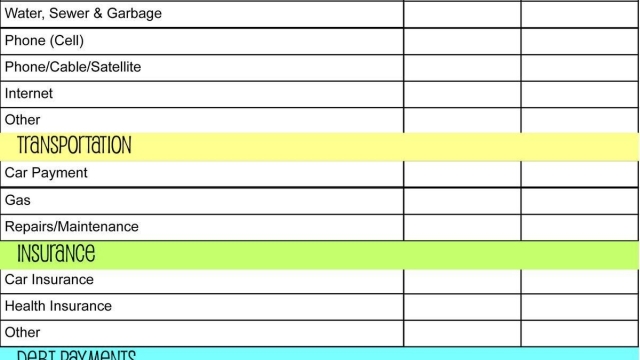
In today’s fast-paced business environment, organizations face an ever-growing list of regulatory requirements and compliance challenges. As industries evolve, the demand for effective compliance management has never been more crucial. Companies are realizing that achieving and maintaining compliance is not just about adhering to laws and regulations; it’s about establishing a culture of quality and accountability that ultimately drives success. This is where compliance management software steps in, serving as an essential tool for navigating the complexities of regulatory compliance.
AssurX is at the forefront of this evolution, providing quality management and regulatory compliance management software specifically designed for regulated industries. By leveraging their technology, organizations can streamline compliance processes, reduce risks, and ensure that they meet industry standards efficiently. This ultimate guide will delve into the functionalities, benefits, and implementation strategies of compliance management software, highlighting how AssurX can support businesses in mastering their compliance challenges and fostering a resilient organizational framework.
Overview of Compliance Management Software
Compliance management software plays a crucial role in helping organizations adhere to industry regulations and internal policies. These tools provide a systematic approach to managing compliance activities, ensuring that businesses can effectively monitor, evaluate, and report on their compliance status. With increasing regulatory demands across various sectors, the need for robust compliance management solutions has never been more significant.
Many organizations face challenges in keeping up with the evolving landscape of regulations. Compliance management software streamlines the process by centralizing compliance documentation, automating workflows, and offering real-time reporting capabilities. This efficiency not only helps mitigate risks associated with non-compliance but also enhances overall operational efficiency by reducing manual processes.
AssurX is a leading provider of quality management and regulatory compliance management software tailored for regulated industries. Their solutions empower businesses to maintain high standards of quality while ensuring compliance with both local and international regulations. By leveraging advanced technology, organizations can simplify their compliance efforts and focus on their core objectives.
Key Features of AssurX Software
AssurX offers a comprehensive suite of features designed specifically for regulated industries, ensuring that organizations can effectively navigate the complexities of quality management and regulatory compliance. One of the standout capabilities is its robust document management system, which allows users to create, review, and manage documents in a centralized location. This feature not only streamlines processes but also ensures that all compliance-related documents are easily accessible and up to date, reducing the risk of non-compliance.
Another critical feature of AssurX software is its incident management functionality. This allows organizations to track and manage incidents in real-time, facilitating prompt reporting and resolution. With automated workflows and notifications, teams can respond swiftly to compliance breaches or quality issues, ultimately helping to maintain regulatory standards and enhance overall operational efficiency. The software ensures that all incidents are documented thoroughly, providing a clear audit trail necessary for compliance reporting.
Additionally, AssurX software includes powerful reporting and analytics tools that help organizations gain insights into their compliance and quality management processes. Users can generate customized reports to monitor key performance indicators, identify trends, and implement data-driven decisions. This feature empowers teams to proactively address compliance challenges, improve processes, and maintain a culture of continuous improvement, making it an invaluable asset for any organization aiming for excellence in regulatory compliance.
Benefits for Regulated Industries
Compliance Management Software
Regulated industries face unique challenges when it comes to compliance, making the use of Compliance Management Software essential. One key benefit is the ability to streamline processes and reduce administrative burdens. This software automates tasks such as documentation, reporting, and tracking, enabling organizations to focus on their core operations while ensuring adherence to regulatory requirements. By minimizing manual workload, companies can allocate resources more efficiently and increase productivity.
Another significant advantage is enhanced visibility and oversight. Compliance Management Software provides a centralized platform for monitoring compliance activities, which helps organizations identify potential risks and noncompliance issues early. With real-time data and analytics, businesses can make informed decisions and implement corrective actions proactively, thus reducing the risk of penalties and reputational damage associated with regulatory breaches.
Finally, by using Quality Management and Regulatory Compliance Management Software, organizations can foster a culture of continuous improvement. This software not only assists in meeting current compliance standards but also supports the integration of best practices into daily operations. As regulated industries evolve, the adaptability of compliance software ensures that businesses can keep pace with changing regulations and maintain a competitive edge in the marketplace.
Implementation and Best Practices
Successfully implementing compliance management software requires a well-structured plan that involves all relevant stakeholders from the outset. Begin with a thorough assessment of your current compliance processes and identify areas that can be improved with the new software. Engaging team members during the selection and implementation phases promotes buy-in and helps ensure that the chosen software aligns with organizational goals. Training sessions should be scheduled early to provide users with the necessary skills to leverage the software effectively, fostering a culture of compliance that permeates the organization.
Once the software is in place, it is crucial to establish clear procedures and protocols that govern its usage. Create comprehensive documentation covering various aspects of compliance tasks and make this easily accessible to all users. Regular updates and reminders about compliance requirements will help keep everyone on track. In addition, implementing feedback mechanisms allows users to report issues or suggest enhancements, leading to continuous improvement of the software’s functionality and user experience.
Finally, regularly evaluate the effectiveness of the compliance management software to ensure that it remains aligned with regulatory changes and organizational needs. Conduct periodic audits to assess compliance effectiveness and identify potential areas of risk. Leveraging analytics tools within the software can provide insights into compliance performance, helping organizations make informed decisions. By staying proactive and adaptable, organizations can achieve their compliance goals while maximizing the benefits of their compliance management software, such as that offered by AssurX.


